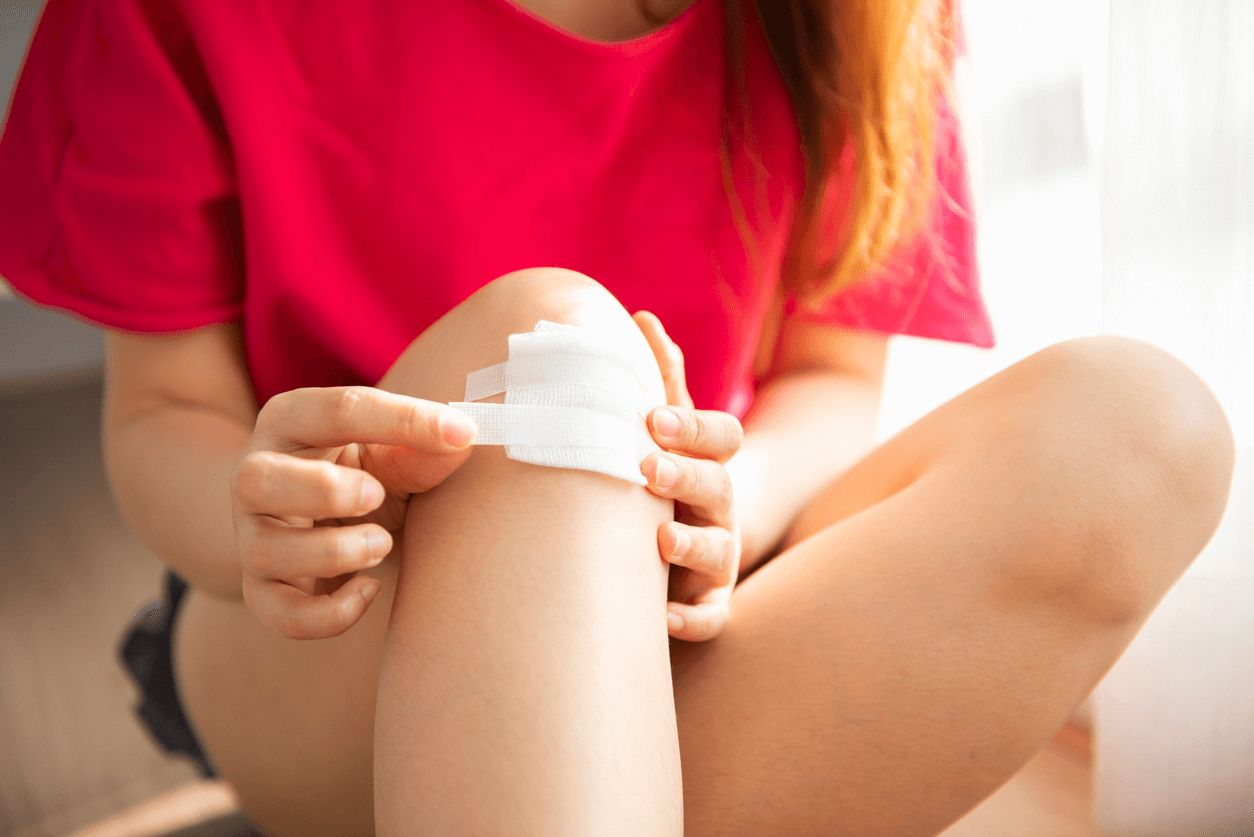
Open Wound Types & How To Care For Them.
Open Wound Types & How To Care For Them.
Open wounds are breaks or damages to the surface of the skin. Read more about the types and how you should care for them.
An open wound is a break or damage to the surface of the skin. There are different types of open wounds and different injuries that can cause them. Open wounds should be cared for as soon as possible to help prevent infection, as the opening in the skin can let germs enter the body and potentially make you sick. This article covers some basic information on different types of wounds and how to look after them – it is not a substitute for professional medical advice. See your doctor or pharmacist if you are worried or unsure how to treat an open wound.
Types of open wounds
Abrasions (scrapes)
Abrasions, scrapes, or grazes are caused by friction (rubbing) of the skin against a rough surface. They tend to impact the top layers of the skin. A tell-tale sign of a scrape or graze are lines in the skin with spots of bleeding.
With an abrasion, the first step is to clean the wound. You can try clean water, saline, or an antiseptic solution – such as Betadine Antiseptic Topical Solution – before covering the abrasion with a non-stick dressing or plaster (if it is small enough).
Lacerations and cuts
Lacerations and cuts are similar types of wounds. A cut may be caused by a sharp object slicing through the skin, such as a piece of glass. A laceration is when the skin splits due to a blow to the skin. An easy way to tell the difference is a laceration will have jagged edges, while a cut usually has smooth edges.
If the cut or laceration is minor, you may be able to manage it yourself. First, press and hold the wound firmly with a clean cloth or bandage to help stop any bleeding, then wash out the wound with clean water or saline. Finally, cover the wound with a bandage or plaster to help keep it clean.
If the cut or laceration is deep, or you cannot stop the bleeding, seek help from a doctor or pharmacist, or go to the hospital straight away.
Avulsions (tears)
Avulsions are also known as skin tears. Technically, an avulsion is where the skin is torn away from the body forcefully, while a skin tear is caused by friction or blunt trauma (like bumping into something), causing the layers of the skin to separate. The main difference is how much force was used to create the wound and how deep the damage goes.
The first step in managing skin tear is to stop the bleeding by applying gentle pressure to the wound. Then you can carefully wash it with clean water or saline. If there is dirt or debris in the wound, you may use an antiseptic solution. If possible, cover tears and use a dressing to help keep it in place.
If the tear looks deep or is large see a doctor as soon as possible.
Punctures
Puncture wounds may be caused by something sharp penetrating the skin, such as a nail or a wood splinter, and are usually deeper than they are wide. Because they are caused by a foreign body breaking through the skin, there may be a concern about infection or something getting stuck inside the wound.
Puncture wounds should be managed by firstly stopping the bleeding, for example by applying a clean cloth or bandage. If the wound is more than a few millimetres deep you should see a doctor.
The Betadine range for open wound care
The Betadine range of products contains a variety of formats for treating open wounds. For minor grazes, burns and scalds, and minor skin infections, consider Betadine Antiseptic First Aid Cream. It’s a non-irritating formula with a cream base that allows for easy application and removal without permanently staining skin or natural fabrics. Alternatively, Betadine Antiseptic Liquid Spray or Betadine Antiseptic Topical Solution provide a convenient option for applying antiseptic without touching an open wound.
To help prevent infection in minor cuts and abrasions and minor burns, and to treat common skin infections, try Betadine Antiseptic Ointment.
When dealing with wounds that may be dirty, apply Betadine Antiseptic First Aid Cream or Betadine Antiseptic Ointment before covering the wound with a dressing or bandage.
Frequently asked questions (FAQs)
After washing your hands, gently clean the wound with clean water or saline solution. Remove any dirt or debris with tweezers or a clean cloth. Clean the skin around the wound and pat the area dry with a clean towel or pad. Next, apply antiseptic if the wound is dirty or you are concerned about infection, and then cover the wound with a dressing or bandage (depending on the size of the wound).
There are various types of dressings for different wounds. Ideally, you want to keep the wound not too wet or dry, but with just the right moisture level to promote healing. Ask your doctor or pharmacist what type of dressing is appropriate for each type of wound.
This depends on the type of wound and the dressing used. Follow your doctor or pharmacist’s instructions for how often and how to change open wound dressings.
You can help prevent infection by cleaning the wound before applying a dressing. If a wound is dirty, you can apply an antiseptic product underneath the dressing. Keep an eye out for signs of infection: redness or swelling around the wound that starts to spread, a high temperature (fever) develops, a wound that won’t heal or starts oozing. If you see any of these signs, seek medical help immediately.
Always read the label and follow directions for use.
AU-2024-07-0099.
